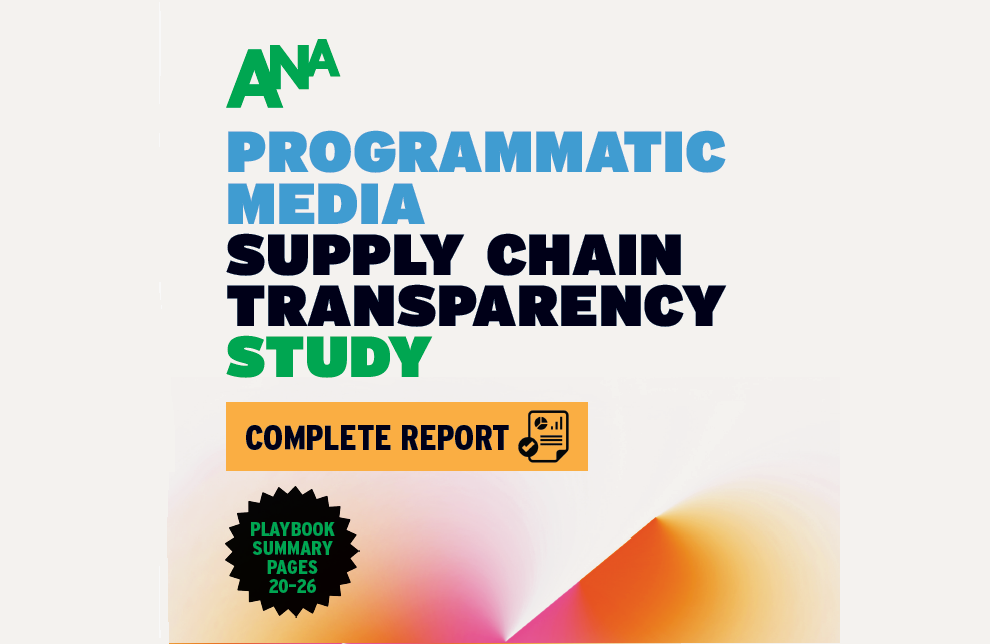ANA's Programmatic Media Supply Chain Study, December 2023; Déjà Vu All Over Again

The realm of digital advertising has undergone significant transformation with the advent of programmatic advertising, which automates the buying and selling of ad space, making it efficient and scalable. However, this efficiency comes with its innate challenges and pitfalls, as highlighted in the ANA's latest report on media supply chain transparency, released on December 6, 2023. There were many key themes but the few that stick out surround inventory quality and access to direct DSP relationships vs using resellers as many do and the misalignment of incentives, particularly when advertisers prioritize lower costs (cheap CPMs) over the value or quality of the ad placements.
Overview of the ANA Report
Key Findings:
- Transparency: The report sheds light on the continued lack of transparency in the programmatic advertising ecosystem. This includes hidden costs and fees, making it difficult for advertisers to understand where their advertising dollars are going. ANA and TrustNet have launched a transparency certification program to highlight the good actors this year, vs the bad, but not surprisingly none of the big DSP names are on it as they have little reason to lower margin or show where they take it which is creating green space for companies like Octillion and AdForm.
- Quality vs. Cost: A significant emphasis is placed on the tendency of advertisers to favor lower CPMs, often at the expense of ad quality and placement. This has been a long standing issue, especially for larger hold co's who are winning business on the basis of reducing fee's, while losing sight of the key business drivers and business impact that chasing quality over price provide.
- Impact on Ad Effectiveness: The report suggests that this preference for cheaper options can lead to reduced ad effectiveness, harming long-term brand value, especially since there is more and more MFA (made for advertising pages) and chasing low cost will inevitably land you in MFA land.
Understanding Programmatic Advertising
The Mechanism:
•Automated Buying/Selling: Programmatic advertising uses algorithms and technology to buy and sell ad space in real-time.
•Data-Driven: It leverages consumer data to target ads more effectively.
Benefits:
•Efficiency and Scalability: It allows advertisers to reach a wider audience quickly and efficiently.
•Targeting Capabilities: Enhanced targeting leads to theoretically better ad performance.
The Problem of Misaligned Incentives
Cheap CPMs Over Value:
•Short-term Cost Savings: Advertisers often chase lower CPMs to reduce immediate advertising costs.
•Neglect of Ad Quality: This approach can lead to the neglect of the quality of ad placements, such as the context and the environment in which the ad is displayed.
Impact on Advertisers and Brands
•Reduced Ad Effectiveness: Poor ad placements can lead to lower engagement and brand recall.
•Brand Safety Concerns: Ads appearing in non-premium or inappropriate contexts can harm the brand's reputation.
Case Studies and Examples
Negative Outcomes:
•Case Study 1: An example where an advertiser prioritized cheap CPMs, resulting in ads placed in low-quality environments, leading to brand damage.
•Case Study 2: A comparison between two campaigns - one prioritizing low CPMs and the other prioritizing premium placements, highlighting the difference in ROI and brand perception.
Strategies for Alignment of Incentives
Emphasizing Value over Cost:
•Quality Metrics: Encouraging advertisers to consider metrics beyond CPM, like engagement rates, business outcomes, viewability, and brand safety.
•Long-term Brand Value: Focusing on how premium ad placements can enhance long-term brand value and customer loyalty.
Transparency and Education:
•Understanding the Supply Chain: There is no excuse to be an under educated buyer today. There is an abundance of information and partners like Octillion and AdForm who are leading the way on transparency can help advertisers better understand the complexities of the programmatic supply chain to make more informed decisions.
•Demanding Transparency: Advertisers must demand greater transparency from their media partners including access to audited log-level data to ensure you understand the source of media (from a supply path perspective), the cost of media, the middlemen or other hidden fees being levied and more. Ad-tech creates and adds tremendous value but the days of taking margin of 35-100% are over (or should be) and buyers must demand more to ensure they get what they expect.
Too often I speak to procurement or media execs who think they are paying a very low take rate for programmatic media and lose sight of or do not take into account the costs of API's, bid-shading, data or inventory mark-ups, or other hidden fees that are allowing large public companies to report earnings of 60-200%. It is impossible that you are paying a low take rate and somehow all of their other buyers are the ones paying the 50-200% extra. Everyone is paying more and unless you are an informed and intelligent buyer, you too will be contributing to the billions in waste the ANA spoke about.
Conclusion
The ANA's report must be a wake-up call for the advertising industry, highlighting the pitfalls of misaligned incentives in programmatic advertising. It underscores the importance of prioritizing quality and value over mere cost-saving measures. As the digital advertising landscape continues to evolve, it is imperative for advertisers to realign their strategies, focusing on long-term brand value and effective consumer engagement, rather than short-term cost efficiencies and align with partners who share their incentives for success.
Buyers most widely impacted are those in the local and mid-market media space who have been buying from smaller agencies or resellers of large DSP's and multi-national and Global brands buying from the large DSP's who do not understand their fee structures or who are focused on the wrong pieces of these fees due to a lack of information. Education is power!
Posted at MediaVillage through the Thought Leadership self-publishing platform.
Click the social buttons to share this story with colleagues and friends.
The opinions expressed here are the author's views and do not necessarily represent the views of MediaVillage.org/MyersBizNet.


